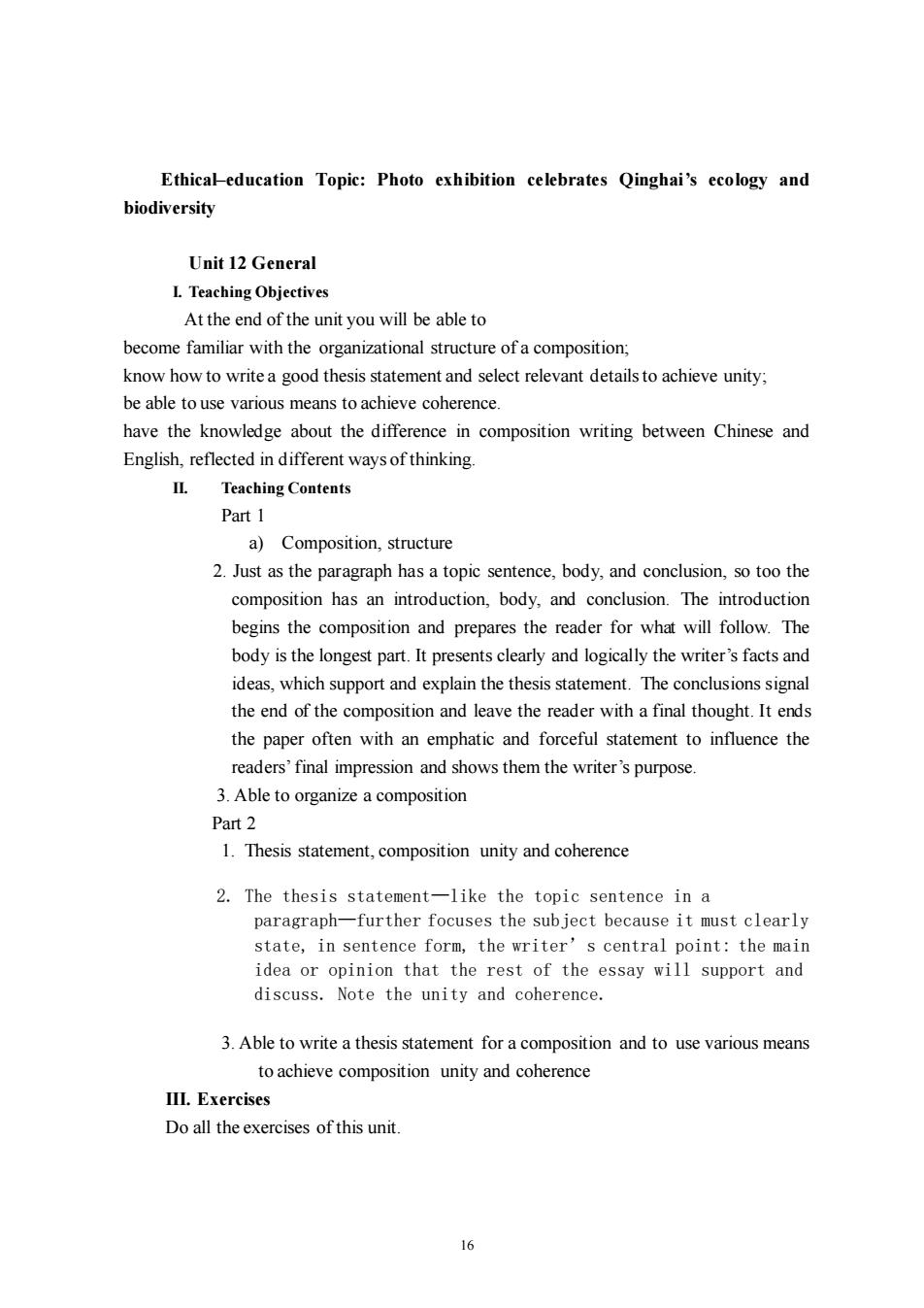正在加载图片...

Ethical-education Topic:Photo exhibition celebrates Qinghai's ecology and biodiversity Unit 12 General L Teaching Objectives At the end of the unit you will be able to become familiar with the organizational structure of a composition; know how to write a good thesis statement and select relevant details to achieve unity; be able to use various means to achieve coherence. have the knowledge about the difference in composition writing between Chinese and English,reflected in different waysof thinking. n. Teaching Contents Part 1 a)Composition.structure 2.Just as the paragraph has a topic sentence,body,and conclusion,so too the composition has an introduction,body,and conclusion.The introduction begins the composition and prepares the reader for what will follow.The body is the longest part.It presents clearly and logically the writer's facts and ideas,which support and explain the thesis statement.The conclusions signal the end of the composition and leave the reader with a final thought.It ends the paper often with an emphatic and forceful statement to influence the readers'final impression and shows them the writer's purpose. 3.Able to organize a composition Part 2 1.Thesis statement,composition unity and coherence 2.The thesis statement-like the topic sentence in a paragraph-further focuses the subject because it must clearly state,in sentence form,the writer's central point:the main idea or opinion that the rest of the essay will support and discuss the unity and coherence 3.Able to write a thesis statement for a composition and to use various means toachieve composition unity and coherence III.Exercises Do all the exercises of this unit 16 16 Ethical–education Topic: Photo exhibition celebrates Qinghai’s ecology and biodiversity Unit 12 General I. Teaching Objectives At the end of the unit you will be able to become familiar with the organizational structure of a composition; know how to write a good thesis statement and select relevant details to achieve unity; be able to use various means to achieve coherence. have the knowledge about the difference in composition writing between Chinese and English, reflected in different ways of thinking. II. Teaching Contents Part 1 a) Composition, structure 2. Just as the paragraph has a topic sentence, body, and conclusion, so too the composition has an introduction, body, and conclusion. The introduction begins the composition and prepares the reader for what will follow. The body is the longest part. It presents clearly and logically the writer’s facts and ideas, which support and explain the thesis statement. The conclusions signal the end of the composition and leave the reader with a final thought. It ends the paper often with an emphatic and forceful statement to influence the readers’ final impression and shows them the writer’s purpose. 3. Able to organize a composition Part 2 1. Thesis statement, composition unity and coherence 2. The thesis statement—like the topic sentence in a paragraph—further focuses the subject because it must clearly state, in sentence form, the writer’s central point: the main idea or opinion that the rest of the essay will support and discuss. Note the unity and coherence. 3. Able to write a thesis statement for a composition and to use various means to achieve composition unity and coherence III. Exercises Do all the exercises of this unit